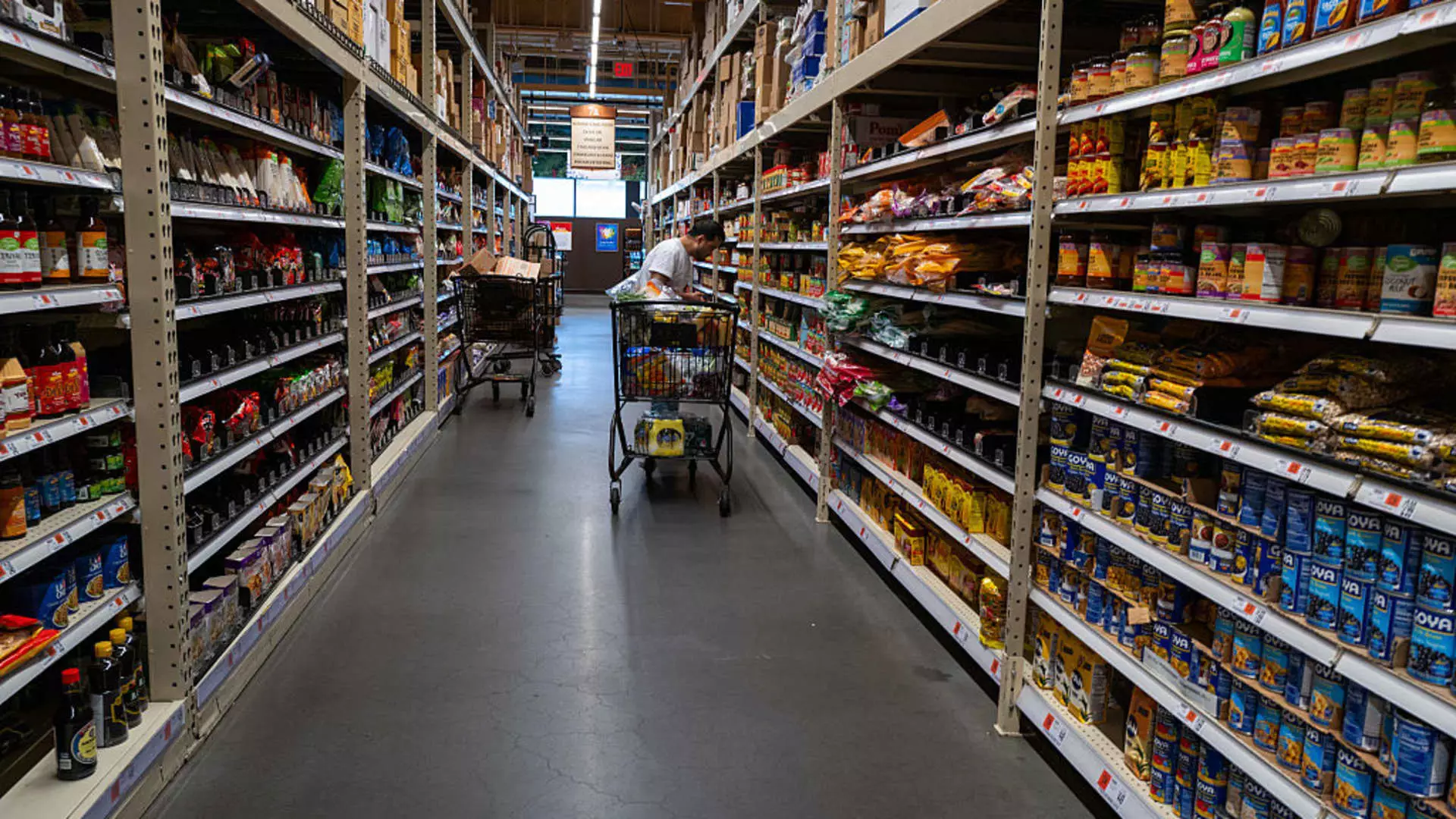As the world grapples with the complex interplay of trade policies and consumer behavior, recent economic reports reveal an unsettling stability in inflation rates. The Commerce Department’s findings illustrate a meager increase of just 0.1% in the personal consumption expenditures price index in April. This figure, while in line with the Dow Jones consensus forecast, belies deeper economic currents that hint at a storm brewing beneath the surface. Annual inflation now rests at 2.1%, a mere featherweight below the Federal Reserve’s target. Yet, pack away the celebratory confetti; this is no occasion for optimism.
The stark reality is that our economy is teetering on the brink of stagnation while policymakers dance around the issue. Excluding the volatile categories of food and energy, the core inflation has shown only modest increases, reflecting a troubling trend: consumers are pulling back, evidenced by a significant slowdown in consumer spending, which climbed a mere 0.2% in April, down from a more vigorous 0.7% in March. If this is the new normal, one must ask what it portends for the health of our economy in the long run.
Consumer Sentiment: Deteriorating Trust and Escalating Savings
Consumer sentiment appears to be wavering, a phenomenon highlighted by an unprecedented increase in the personal savings rate, which surged to 4.9%. This spike is not simply a positive reflection of prudent financial behavior; it signals an underlying fear and uncertainty among consumers who are increasingly reluctant to engage in spending. The juxtaposition of rising personal income—up 0.8%—with stagnating consumer expenditure raises red flags for economic growth. At a time when consumer spending typically propels economic activity, a more cautious attitude among households is palpable.
This shift in consumer behavior might be a rational response to an uncertain economic climate marked by unpredictable trade policies and ambiguous governmental direction. While personal savings can be seen as a positive in isolation, it often indicates a lack of confidence in the market, suggesting that households are bracing for an economic downturn rather than indulging in fiscal exuberance.
Tariffs and Uncertainty: The Fear of Inflation Returns
One cannot overlook the looming specter of tariffs as a disruptive force in this economic landscape. President Trump’s implementation of across-the-board 10% duties on U.S. imports, introduced ostensibly to rectify the gaping trade deficit, is reminiscent of past decisions that have led to economic strife. Though the administration has seemingly backtracked to facilitate negotiations, the initial misstep remains poignant in consumers’ minds and economists’ analyses.
With international courts challenging these tariffs as overreach, the resultant uncertainty surrounding trade policies breeds anxiety among businesses and consumers alike. Economists are rightfully concerned about the potential for these tariffs to reignite inflation, a memory most Americans associate with the economic malaise of the 1980s. The specter of stagflation—characterized by stagnant economic growth coupled with rising prices—could return with a vengeance if these trends are left unchecked.
Monetary Policy: A Political Minefield
The dialogue surrounding monetary policy under the current administration is fraught with complications. The Federal Reserve’s hesitance to adjust interest rates, despite calls from Trump to soften monetary policy in light of waning inflation, underscores the precarious balance of political influence and economic necessity. The recent meeting between Trump and Fed Chair Jerome Powell, while intended to facilitate communication, yielded no positive outcomes concerning future monetary directions.
As the Fed grapples with the implications of government actions on economic stability, clarity is imperative. Policymakers must disentangle themselves from political machinations and focus on the underlying economic realities confronting American workers. The ultimate question looms: Can rational decision-making prevail in a political environment that incentivizes misinformation and fearmongering?
With rising concerns about labor markets and productivity becoming increasingly entwined with fiscal policy, the potential hazards of inaction linger ever closer. This analysis is critical not only for understanding our current economic position but for framing discussions about the future. Only through clear-eyed assessments can we hope to navigate the choppy waters ahead, avoiding the pitfalls that could lead us straight into the jaws of stagflation.

Leave a Reply